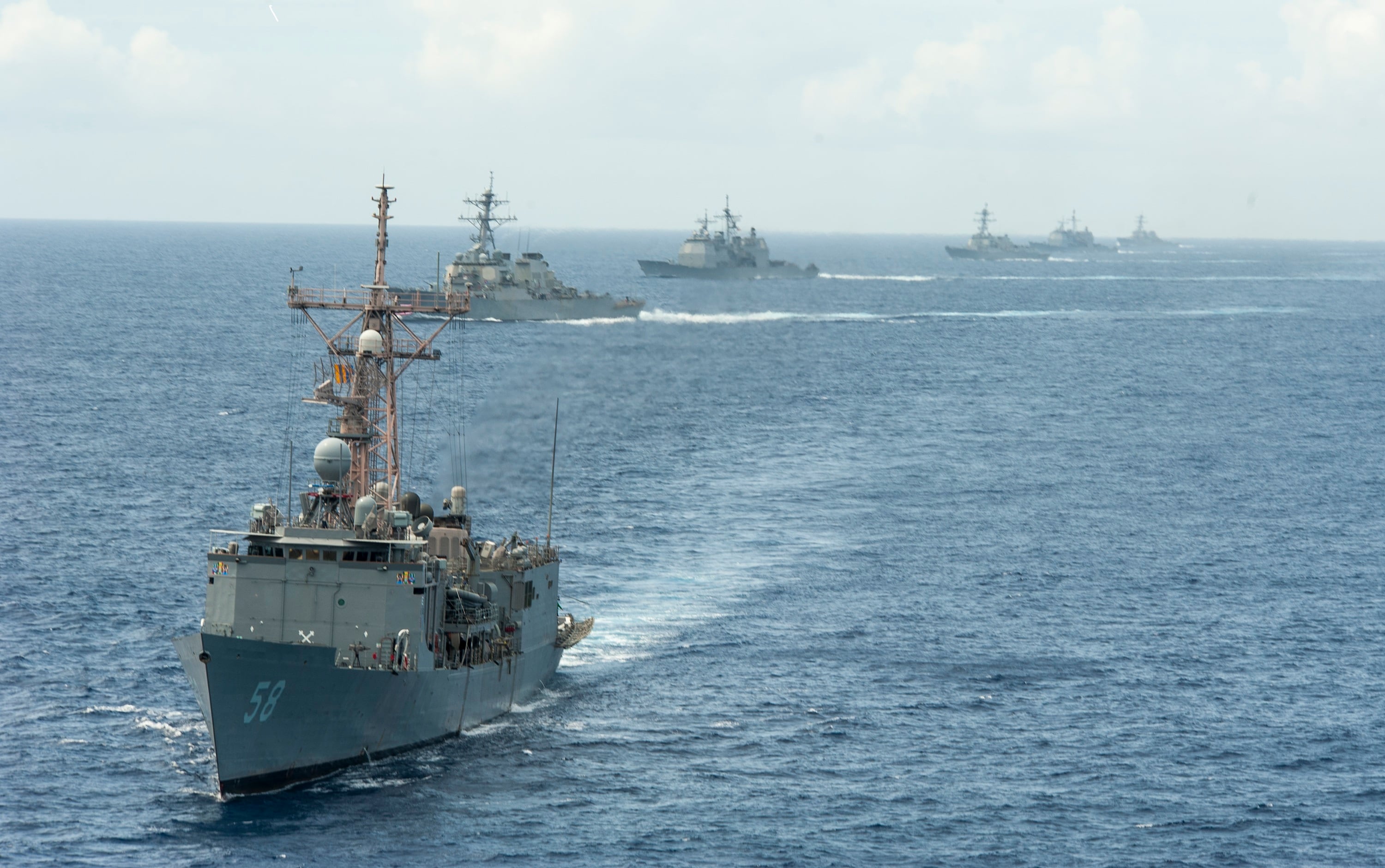WASHINGTON — The U.S. Navy’s fleet would never reach the statutorily required 355 ships under two of the three scenarios outlined in the service’s latest long-range shipbuilding plan.
The plan, submitted to lawmakers Monday and provided to Defense News Tuesday, also details a third scenario, which the Navy describes as one the “industrial base could support with significant additional investment not reflected in this plan” and “without funding constraints” in the federal budget. This version reaches a 355-ship fleet in 2042.
Last year, a similar three-pronged plan generated outrage on Capitol Hill. And Tuesday, Sen. Roger Wicker, the Mississippi Republican who serves as the ranking member on the Senate Armed Services Committee, said the latest version “seems to embrace complacency.”
“Compared to last year’s plan, it trades 35 amphibious warfare ships for support vessels, harming the ability of our Marines to project force,” he continued, adding the Department of the Navy’s fiscal 2024 request was “anemic” and “has failed yet again to build a U.S. Navy fleet that is capable of meeting even basic tasks, to say nothing of growing strong enough to deter near-term threats.”
The document highlights a few barriers to growing the size of the fleet, including limited budget growth — 2.1%, which is lower than current inflation rates — and industrial base limitations. It notes the first two alternatives “do not procure all platforms at the desired rate (e.g., DDGs, SSNs, and FFGs at two ships per year), which industry needs to demonstrate the ability to achieve.”
The Navy today buys destroyers and submarines at a two-a-year rate, but builders have delivered them behind schedule. Alternatives 1 and 2, as a result, buy just one submarine or one destroyer in some years as a result.
And the Navy warns past “boom and bust” shipbuilding profiles since the end of World War II have led to a large number of ships becoming obsolescent now and requiring another “boom” in shipbuilding to keep up the inventory — something the service can’t afford in two of its three alternatives.
As Whidbey Island-class amphibious ships and Ticonderoga-class cruisers have reached that point of obsolescence, the alternatives laid out in the document do not replace these ships on a one-for-one basis.
In fact, the plans do not include any future procurement of San Antonio-class amphibious ships, which were meant to replace the Whidbey Island ships. The Navy and Defense Department truncated the San Antonio production line in the fiscal 2023 budget, calling for a “strategic pause” while offices within the DoD, Navy and Marine Corps conduct an amphibious ship cost/capability study set for completion in June.
Though next year’s long-range plan will presumably add some sort of amphibious ship based on the results of that ongoing study, the plan released this week shows the amphibious warship inventory hovering in the high-20s in the near term and then dropping into the teens as ships are decommissioned without being replaced — compared to the Marines’ stated need for 31 amphibious ships.
On large surface combatants, the Navy would retire all the cruisers by FY27 and then begins retiring the oldest destroyers in FY28. This, coupled with the overall procurement rate of less than two destroyers a year, shrinks the large surface combatant fleet from 90 today to a low of 76.
The alternatives
Alternative 1 is considered the baseline and follows the priorities set forth in the FY24 budget request. It delays the move from today’s Arleigh Burke-class destroyer Flight III design to the next-generation DDG(X) ship, pushing that transition to FY32 to allow for more land-based testing to reduce risk on the future surface combatant.
It also continues the Constellation-class frigate program at a 1-2-1-2 “sawtooth” procurement rate for the foreseeable future and does not reflect a plan to add a second construction yard — which would require the Navy to buy at least three or four ships a year to keep two yards’ production lines moving. It also calls for a transition from today’s Virginia-class attack submarine to the future SSN(X) in the “mid-2030s.”
Alternative 2 places more emphasis on attack submarines and unmanned vessels within a similarly constrained spending topline. According to the document, Alternative 2 would buy some Virginia submarines and some SSN(X) boats next decade instead of fully transitioning to the newer, and likely more expensive, platform.
It also further delays the shift from Arleigh Burke destroyers to DDG(X) and it limits spending on both destroyer platforms. Through both these moves, it allows the Navy to buy more submarines, more combat logistics force ships and more Large Unmanned Surface Vessels using the money freed up by limited destroyer procurement and the hybrid Virginia-SSN(X) procurement strategy.
Alternative 3 would grow the fleet and does not reflect any budget or industrial base constraints. It accelerates aircraft carrier procurement to buying them on four-year intervals instead of five-year centers, and it would buy the next-generation SSN(X) and DDG(X) platforms at a rate of at least two a year to help grow those fleets.
Navy leaders, including Chief of Naval Operations Adm. Mike Gilday, have acknowledged in the past that the Navy needs to be on a path closer to Alternative 3 to build the fleet needed to deter or defeat China. And while the Navy has made significant shipbuilding and submarine industrial base investments over the last few years, the service hasn’t committed to this largest and costliest alternative, leaving industry hesitant to make investments in their production lines without assurances contracts will follow.
Megan Eckstein is the naval warfare reporter at Defense News. She has covered military news since 2009, with a focus on U.S. Navy and Marine Corps operations, acquisition programs and budgets. She has reported from four geographic fleets and is happiest when she’s filing stories from a ship. Megan is a University of Maryland alumna.





